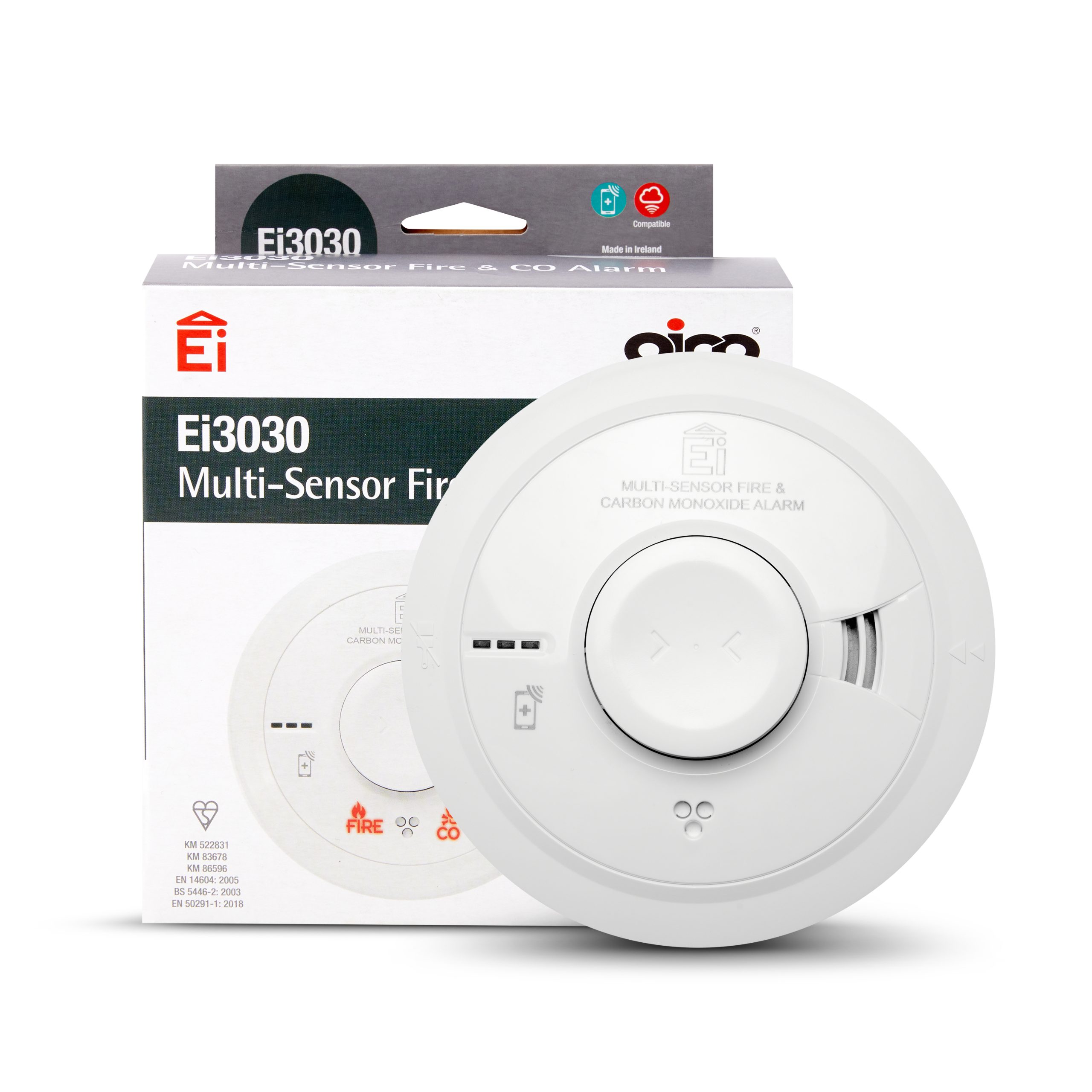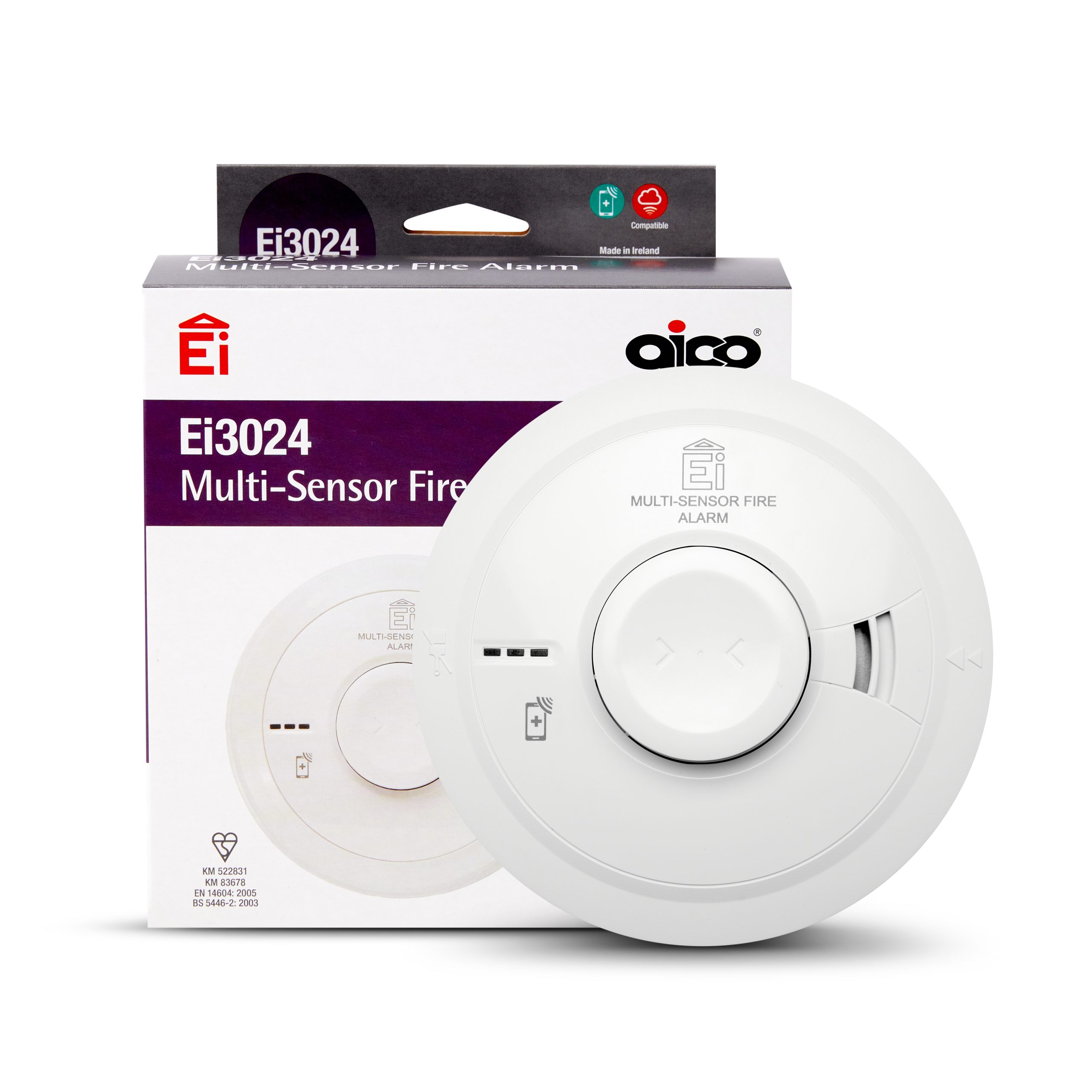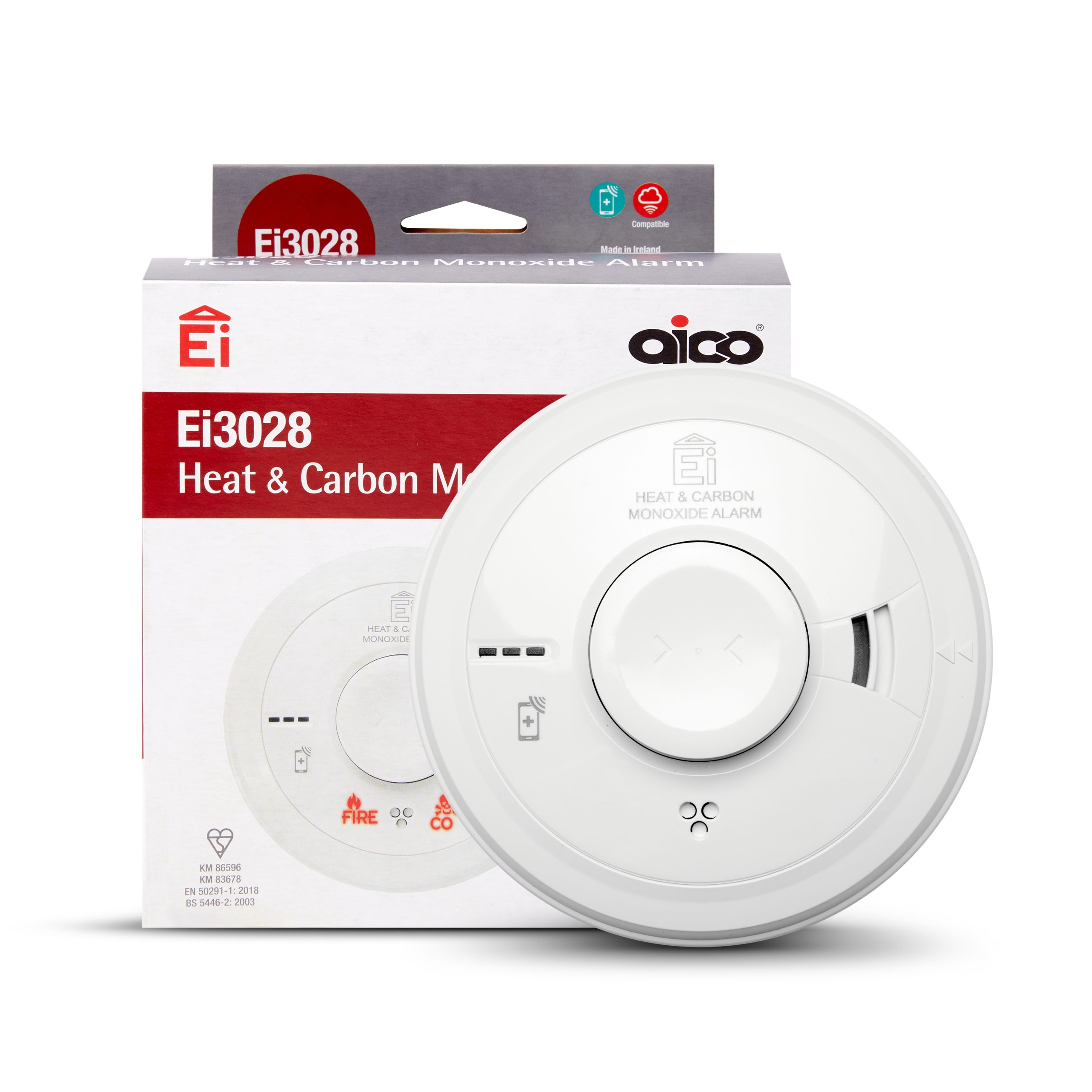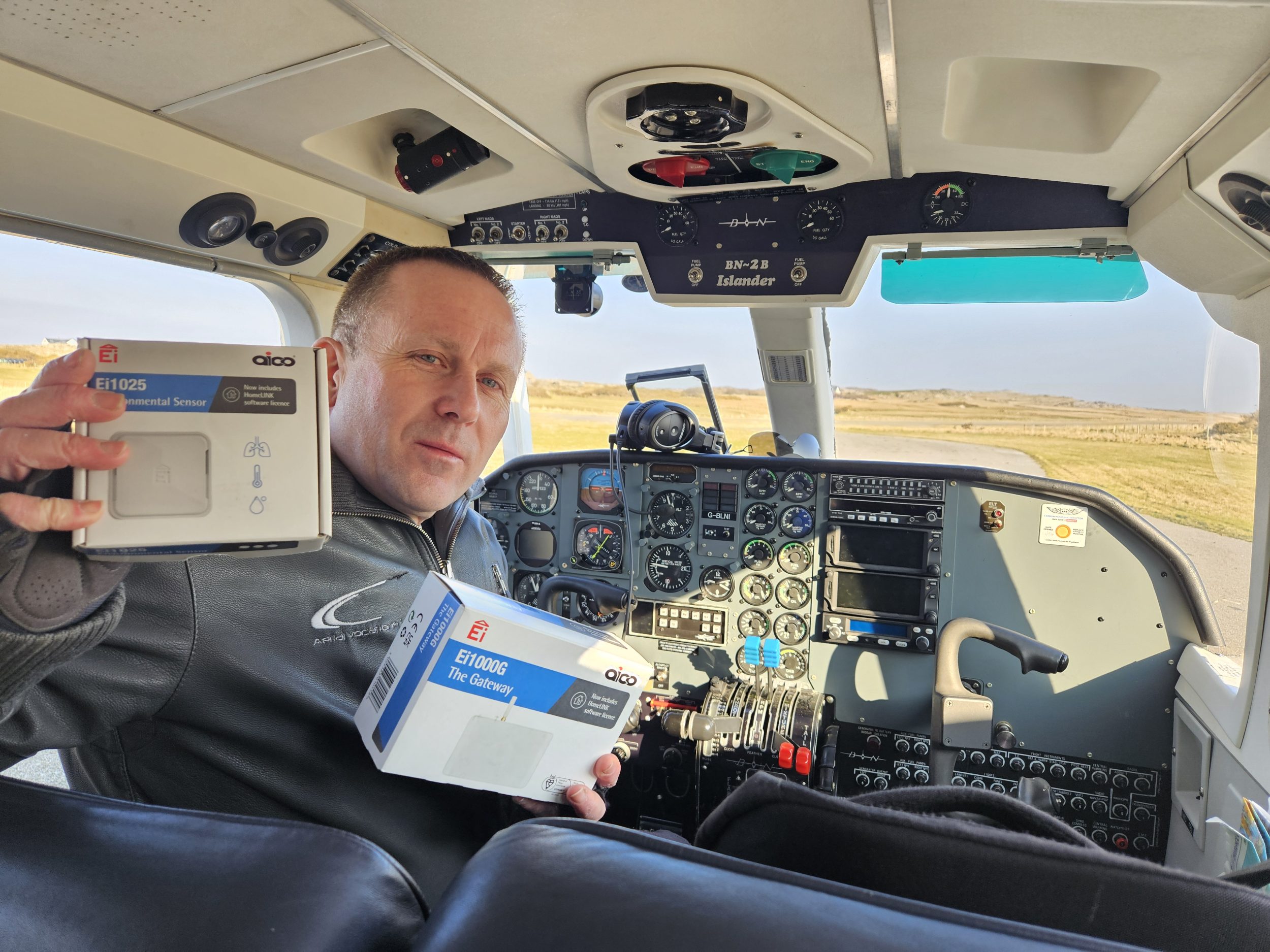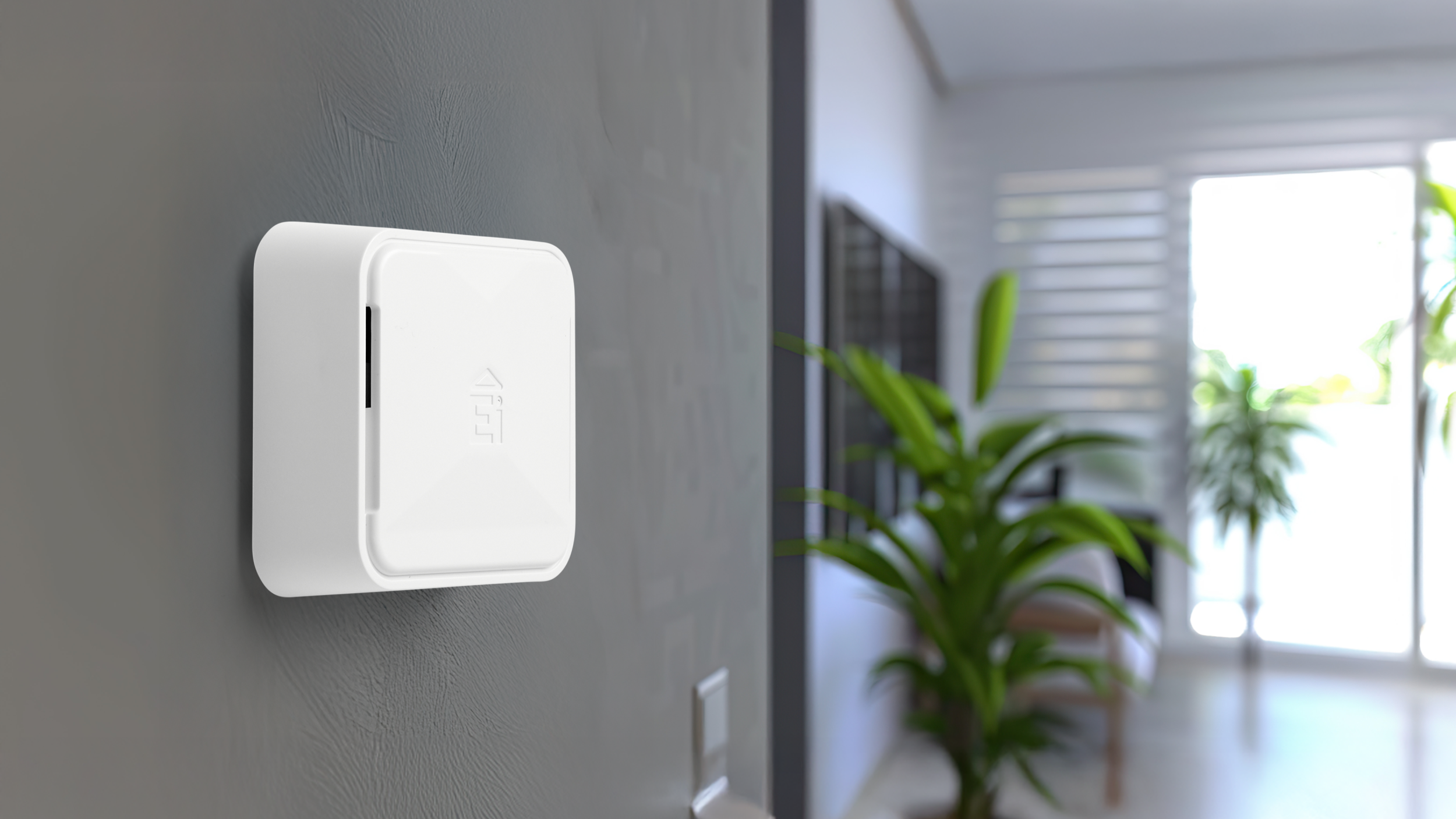How can connected devices help the social housing industry
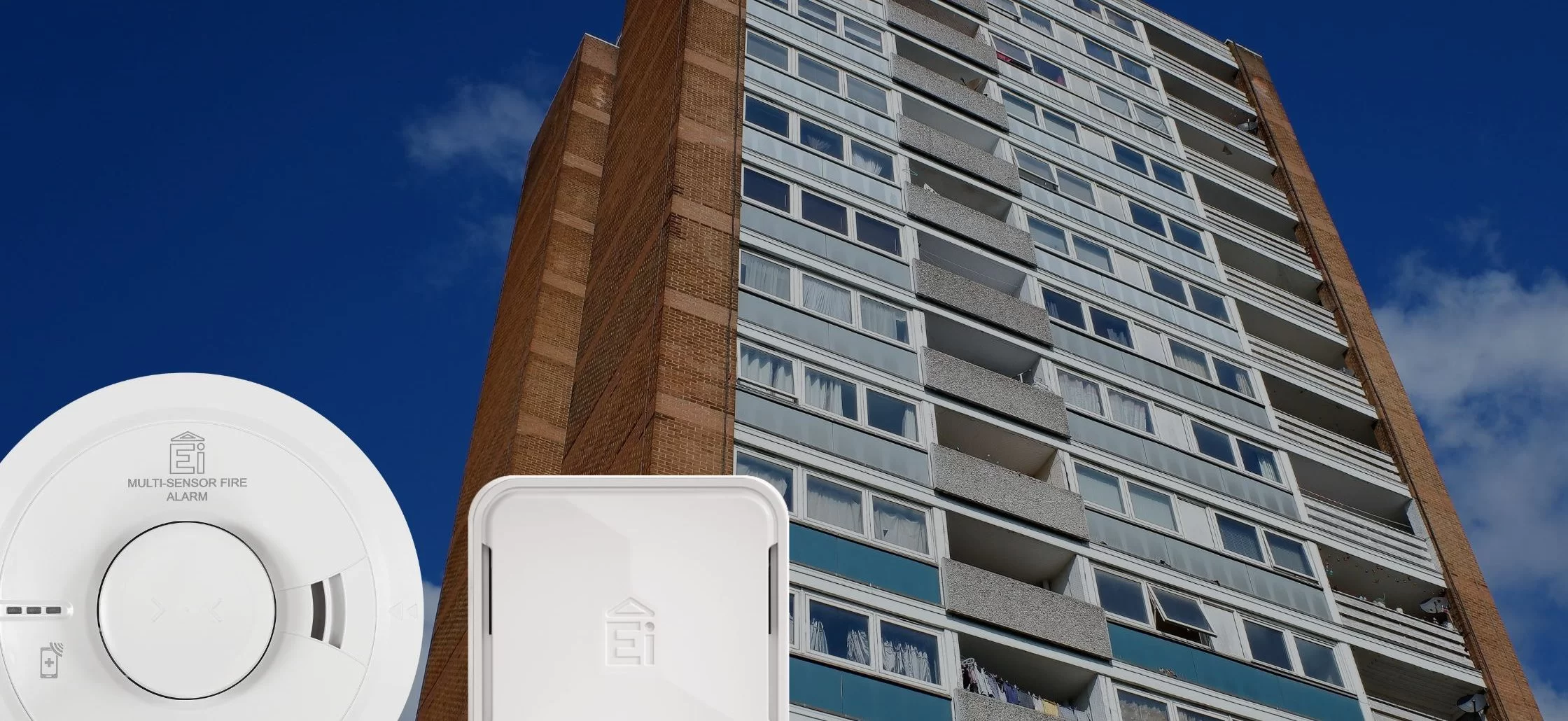
Posted On:
19th January 2023
The use of Internet of Things (IoT) technology within social housing organisations is rising, with housing providers across the UK rapidly deploying connected devices within their properties to improve asset management and promote resident health and safety.
Connected devices for social housing
Aico’s HomeLINK connected home solution includes a network of fire and carbon monoxide alarms and environmental sensors all connected by the award-winning Ei1000G Gateway.
When combined, this IoT technology provides a powerful solution for the social housing sector to make residents safer, happier and healthier while assisting with achieving net zero goals, combating damp and mould, and identifying fuel poverty.
Using connected devices gives housing providers complete transparency in relation to the quality of their housing portfolio. With in-depth data from individual houses and specific rooms, it becomes simple to identify any underlying problems that could contribute to disrepair. This gives landlords the knowledge to tackle issues in a preventative manner, as opposed to reactive responses when the scale of the problem has developed into something more severe.
With over 22,000 socially rented homes in the UK already benefiting from Aico’s HomeLINK connected home solution, many social housing providers are on the same IoT trajectory as those leading the way, recognising the benefits it can bring to both landlords and social housing residents.
What are connected devices?
Smart connected technology, such as the Gateway and its connected devices, bring a new dimension to resident safety.
In the Aico connected home, a connected device refers to either fire and carbon monoxide alarms or environmental sensors, which are wirelessly linked via radio frequency to a central monitoring system – the Gateway – that extracts and collates data from alarm heads and smart sensors using IoT.
The Gateway transfers the data to an innovative online portal, which uses advanced machine learning to transform the raw data into actionable insights for landlords to proactively and efficiently manage their properties.
With over 5 million socially rented homes in the UK, all varying in age and condition, it would be impossible for landlords to take a “one-size-fits-all” approach to the management and maintenance of their housing portfolio.
However, it is necessary for many housing providers to take this route due to the lack of information on their properties. With this comes a limited understanding of how well individual homes are performing. Without specific data on each property in a portfolio, how can we detect which homes could benefit from retrofit or maintenance and if the measures put in place work as intended?
Connected technologies such as Aico’s Gateway and HomeLINK Environmental Sensors help to combat this challenge. When installed across a housing portfolio, this smart technology enables real-time insights into which homes are performing well and which homes could benefit from upgrades.
By replacing assumption and guesswork with data and insights, it is possible for social housing organisations to achieve their overarching goal of ensuring access to a safe, healthy and sustainable place to live for every resident.
Benefits of smart technology and connected devices for the social housing sector
Connected devices and IoT can bring a range of benefits to the social housing sector, from improving asset maintenance, generating cost savings and creating healthier and safer homes.
Next, we will explore how connected technologies can help the social housing industry in more detail.
Operational and cost efficiencies
Through the invaluable data provided by connected devices, social housing providers can begin to manage their properties more proactively in areas such as asset management, fire safety, retrofit validation and tackling disrepair.
Using devices like Aico’s Ei1000G Gateway with connected alarms and environmental sensors provides a 360 view of a housing portfolio. The ability to check the status of alarms and indoor environmental conditions of any connected home, provides a solutions-focused approach to asset management.
These remote, in-depth reporting tools enable landlords to forecast alarm replacement and scheduled works across their entire housing portfolio, helping to streamline maintenance, reduce call-out costs and reallocate resources where they are most needed.
Creating energy efficient housing to achieve net zero goals
All industries across the UK are working towards the government’s target of achieving net zero by 2050, including the social housing sector which has its own target of all homes meeting EPC C by 2030.
The country’s 30 million homes currently account for 21% of the UK’s total carbon emissions, with most of these existing homes achieving an EPC rating ‘D’. In order to achieve net zero by 2050, all homes need to have an energy performance certificate of ‘C’ or above, which will require retrofitting the nation’s homes at scale to reach this ambitious goal.
So, how can connected technology assist social landlords with decarbonising their homes and providing energy efficient properties for their residents?
Environmental sensors and IoT technologies play a pivotal role in the sector achieving net zero, providing essential data for retrofit validation. Useful for both pre-retrofit and post-retrofit monitoring, it also helps housing providers to comply with PAS 2035.
When deployed across a housing portfolio, these connected IoT devices will measure temperature and humidity within a home and offer social housing organisations invaluable insights into matters such as draught risk and heat loss. With this data landlords can better understand how properties respond to seasonal changes and fluctuating temperatures. This information enables accurate targeting of the homes most in need, prioritising resources to areas where it will have the biggest impact.
Post-retrofit, environmental sensors give landlords certainty about how the retrofit design is performing. More airtight, energy efficient homes can sometimes cause unintended consequences, such as damp and mould, due to decreased airflow and ventilation. Continuing to monitor these conditions will provide early signs if a retrofitted property is at risk of developing unhealthy living conditions and enables preventative measures to be put in place.
Combating damp and mould in social housing
Damp and mould are prevalent issues within social housing properties, and landlords must be responsible for providing well-maintained homes for their residents.
No case of damp or mould should ever be ignored. If left untreated, it not only compromises the property’s structural integrity, but also poses a significant health risk to residents, prompting respiratory infections, allergies and asthma. Mould can also negatively affect those with existing conditions, such as respiratory illnesses and skin conditions; people who are immunocompromised are also vulnerable.
By using connected technology such as HomeLINK, it is possible for housing associations to pinpoint properties which are at risk of developing damp and mould due to poor air quality.
There is a range of structural or environmental factors that can contribute to these conditions. Using the data collected from environmental sensors, HomeLINK provides a unique ‘structural vs environmental’ insight to identify the root cause of the problem.
The structural data looks at typical surface humidity, heat dissipation and natural ventilation deficit to identify if factors, such as the thermal efficiency of a room, are impacting the risk of damp and mould. Environmental factors include humidity surges, heating instability and ventilation idleness to determine if damp and mould are forming due to the conditions to which a property is being subjected.
This in-depth analysis enables landlords to accurately target properties in disrepair, and proactively allocate the correct resources to homes that require maintenance.
Providing a solution to disrepair
Disrepair is one of the many challenges faced by social landlords; disrepair claims are on the rise, with cases increasing by 132% nationwide between 2017-18 and 2020-21. Combined with ageing housing stock, a lack of knowledge about their properties and strict regulations, such as the Homes (Fitness for Human Habitation) Act 2018, landlords are under immense pressure to ensure the provision of safe and healthy homes for residents.
The HomeLINK environmental sensors and Portal provide a solution for this, supporting landlords with compliance by providing them with a complete view of their housing portfolio, allowing data science to provide an in-depth view of each of their properties.
The provision of actionable insights, such as the structural vs environmental super insight, enables landlords to utilise resources effectively and target poor-quality homes before disrepair becomes a greater concern.
Why HomeLINK?
The HomeLINK connected home solution offers innovative technology that empowers social housing providers to make data-driven decisions. Using the data provided by HomeLINK, landlords can budget more effectively, support vulnerable residents and in-need properties first, and create safer homes and communities across the UK.
To find out more visit the HomeLINK area of our website.
